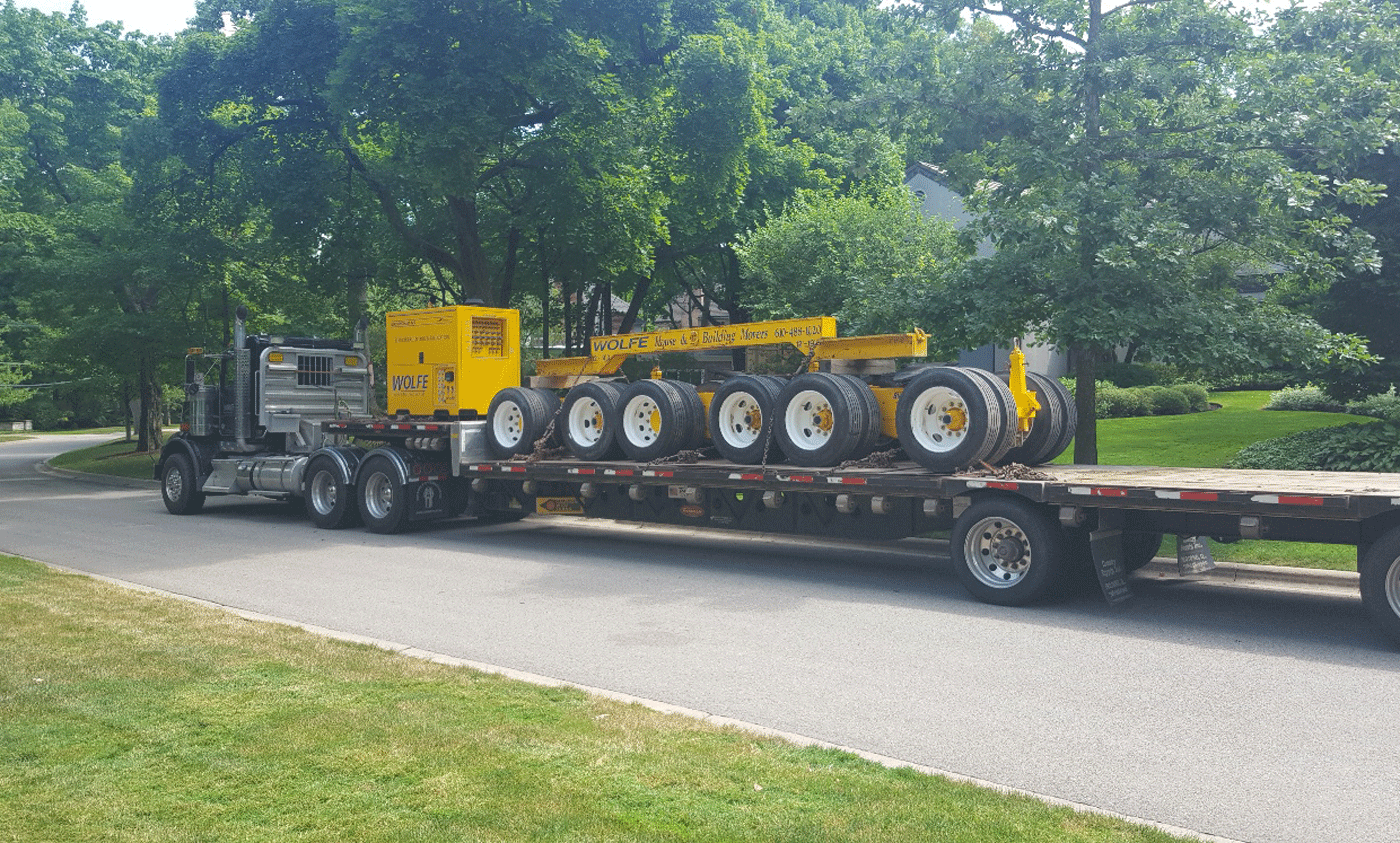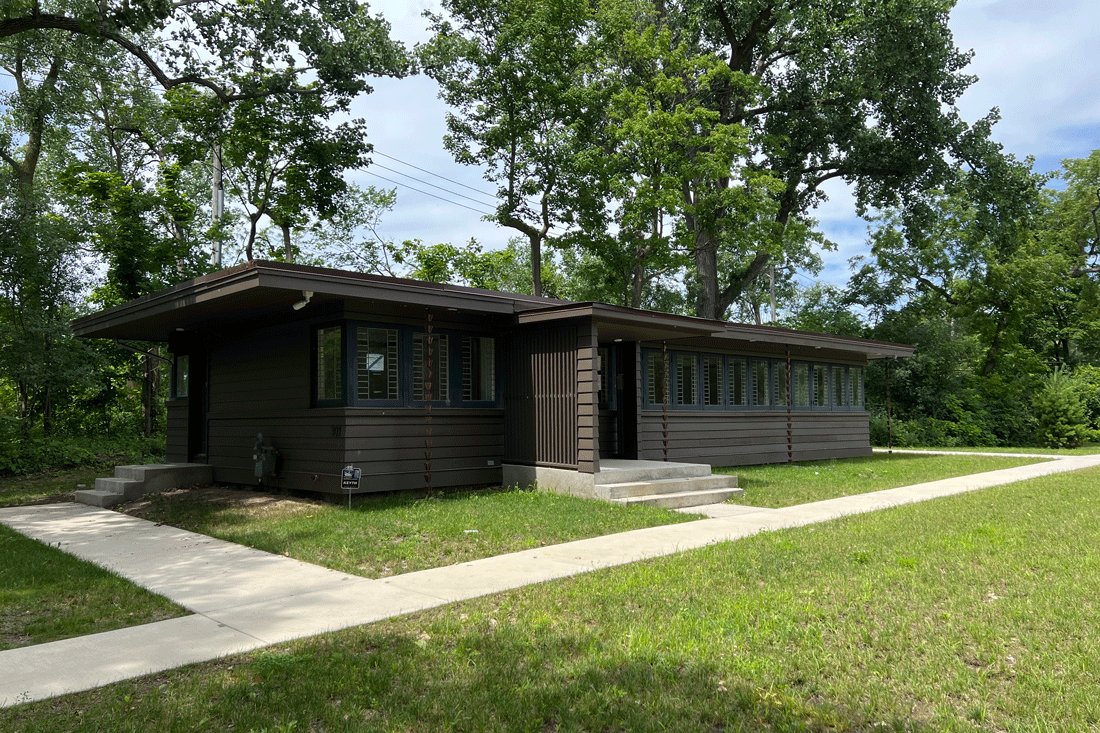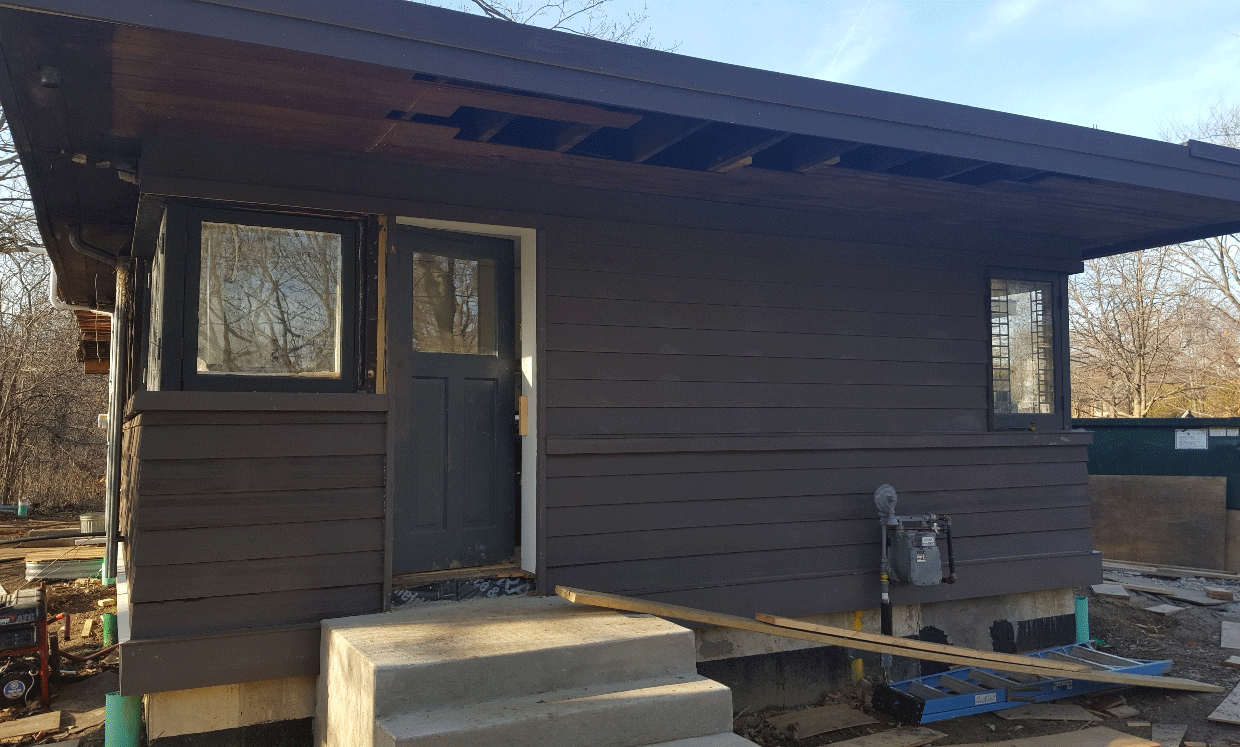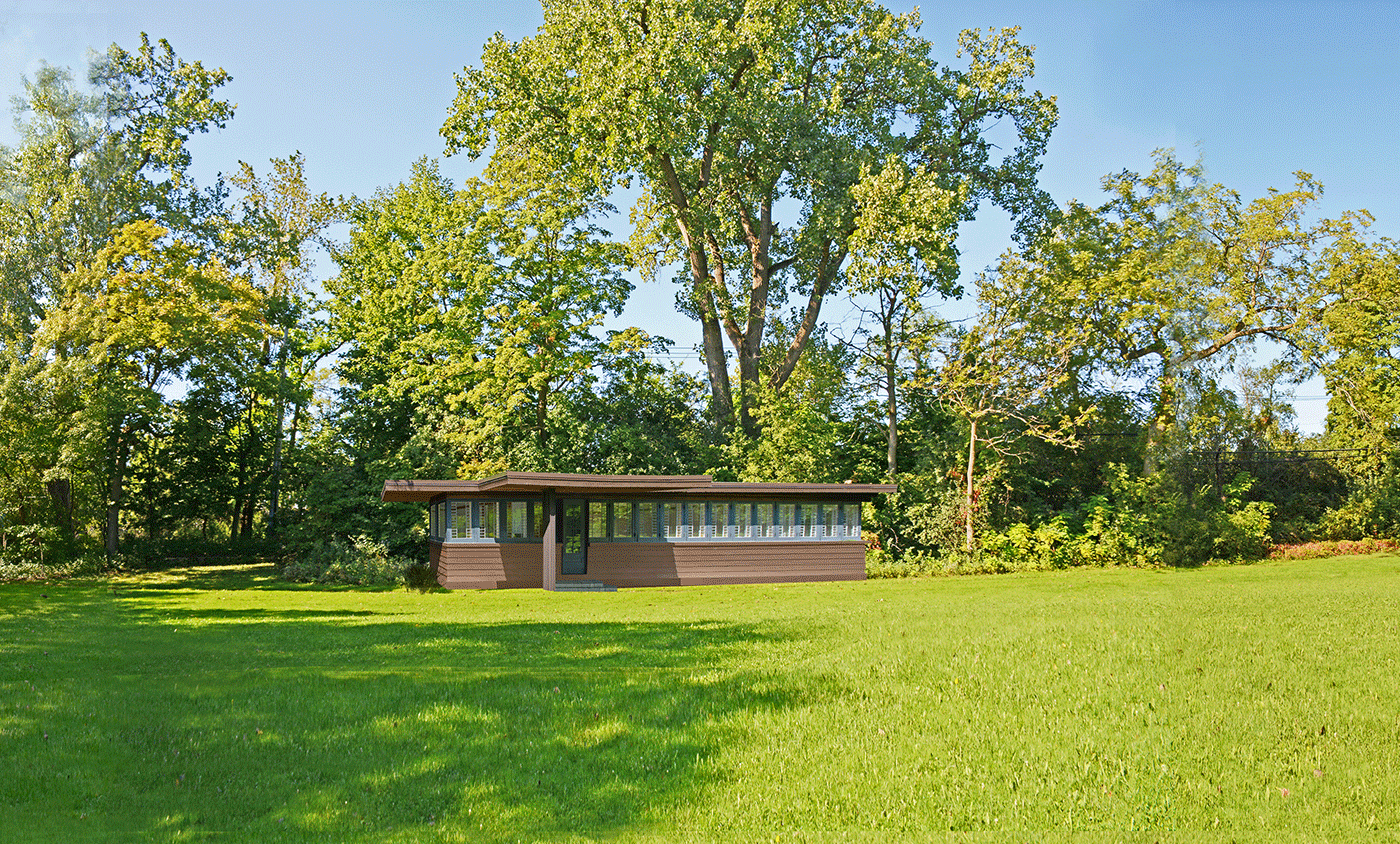On Tuesday, July 21, beginning at 8 a.m., the Frank Lloyd Wright-designed Cottage in Glencoe, Illinois will be moved from its current location to the Glencoe Park District’s Park 7n, saving it from demolition and preserving it to be used for historical research about the world renowned architect.
The Glencoe Historical Society (GHS), the new owner of the Cottage, is delighted that everything is in place for the long-awaited move, which is now subject only to weather conditions or further unanticipated COVID restrictions. Park 7n is located at the intersection of Meadow, Franklin, and Maple Hill roads along the railroad tracks in northeast Glencoe.
Spectators will be allowed to watch the move from areas along the route designated by Glencoe Public Safety. To protect everyone’s safety, spectators will not be allowed on the 239 Franklin Road property. All spectators will be expected to wear a mask and honor appropriate social distancing guidelines.
The Cottage, which will be placed on the southwest edge of the park. Once the building is in place, the exterior will be restored. The GHS also anticipates further restoration of the interior for use as a museum and research center.
The Cottage, on many endangered Wright-designed building lists, was constructed in 1913 for Wright’s attorney, Sherman Booth and his family as a temporary residence while Booth’s full-time home (also designed by Wright) was being constructed nearby. The Cottage is architecturally significant for what it can teach about Wright and his vision of the modern American home of the early 20th century. It is also important for its connection to Elizabeth Booth, one of the leaders of the Illinois’ suffragette movement, who was instrumental in helping Illinois women obtain the right to vote in 1913.
In preparation for the move, the Cottage has been stripped of additions made over the past 60 years and returned to its original design. The GHS negotiated a long term lease with the Glencoe Park District to allow the Cottage to be placed on the park which is situated directly south of Ravine Bluffs, which includes additional Wright-designed homes, a bridge and architectural markers that make Glencoe the third largest concentration of Wright-designed structures in the world.
As part of the relocation project, the GHS has also worked with the Village of Glencoe to remediate water drainage issues for the benefit of community. GHS Co-President Vanessa Zoerb emphasized the need to save the Cottage as the stimulus for the GHS action. The saving of this important transitional Wright design demonstrates to architectural and historical communities nationwide that Glencoe values the importance of the history of the built environment and is willing to “go the extra mile” to maintain that heritage.






